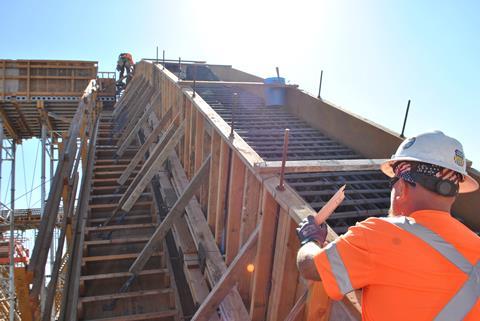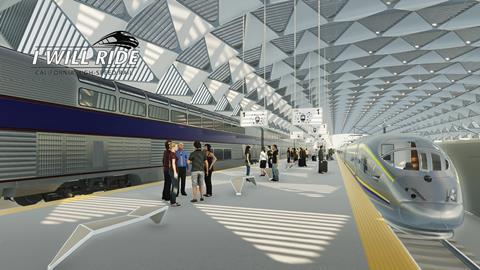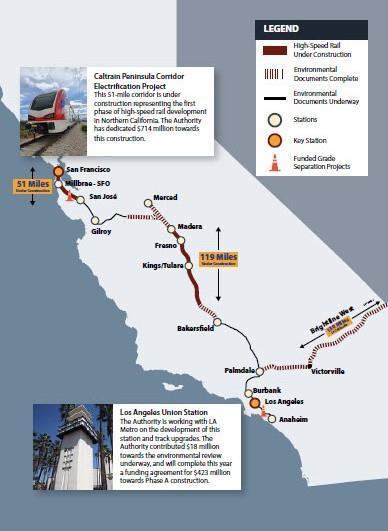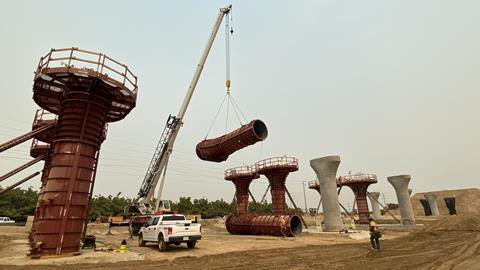USA: California High Speed Rail Authority has issued a Revised Draft Business Plan confirming its intention to press ahead with completing a starter section of high speed line in the Central Valley for revenue operations by the end of the decade.
The draft was published on February 9 for public consultation before being formally submitted to the state legislature in April.
The plan calls for completion of what the authority terms ‘a high speed rail interim service line’ between Merced, Fresno and Bakersfield, which are three of the ‘fastest growing areas’ in the state. This would complete a 270 km section of the original 1 300 km state-wide programme set out in 2009. Construction work is already underway at multiple locations along the starter segment.

The draft plan estimates the cost of completing the Central Valley section to be $13∙8bn, which includes $330m of known cost increases and an extra $1bn of contingency over its 2019 plan, which is largely attributed to the delays in construction work caused by the pandemic.
The plan says that CHSRA intends to adopt a ‘phased approach to installing track’ in the Central Valley, with the route initially being developed as a mostly single-track corridor. ‘The second track is not needed to achieve the operational benefits of the proposed Merced to Bakersfield interim service and would be installed at a later date to meet future service demand’. This would remove $1∙1bn in upfront costs, CHSRA believes.
Bay to Basin vision maintained
Under the plan, CHSRA intends to complete the environmental approval process for what it terms the Phase 1 route covering approximately 800 km between San Francisco and Los Angeles/Anaheim. It will also undertake more construction on the $3bn of so-called ‘bookend’ projects covering local transport in Los Angeles and the San Francisco Bay Area, and ‘pursue additional funding opportunities to prospectively close the gaps and expand electrified high speed rail service to the Bay Area and Los Angeles/Anaheim as soon as possible’.

The plan provides cost estimates for completion of the Phase 1 network ranging from $69∙1bn to $99∙8bn. ‘Although it is easy to focus on their singular price tag, critical projects such as these should really be viewed in the context of the wider fiscal, social, environmental and economic benefits they bring to the region’, the draft says.
CHSRA has also updated its range of long-term ridership forecasts. In 2050, annual throughput is assumed to be between 32∙3 million passengers per annum (low) and 55∙2 million (high).
Dream meets reality
California’s high speed programme has endured a difficult period over recent years as it has become clear that the original vision of linking cities as far north as Sacramento with San Diego in the south by the early 2030s would not be realistic.

Acquiring land and completing the environmental approval processes has been fraught even in the relatively low density Central Valley, while the cost and complexity of building a new line through the Tehachapi mountains into the Los Angeles basin remains an enduring obstacle to progress at the southern end of the corridor.
In February 2019, Governor Gavin Newsom used to his State of the State address to announce that in effect only the Central Valley section of the route would be completed, leading to widespread reports that the project had been de facto cancelled. This in turn led an already hostile Trump administration to terminate a $928m federal funding agreement. The Federal Railroad Administration also sought to claw back another $2∙5bn in grants, arguing that original premise of a state-wide network would not now be delivered.
However, the election of passenger rail advocate Joe Biden as President has restored a modicum of momentum to the programme. Newly appointed Transportation Secretary Pete Buttegieg has already emphasised the role high speed rail could play in developing more sustainable infrastructure in the USA in the wake of the Covid-19 pandemic.
Welcoming the draft business plan on February 9, Newsom said that ‘our goal is to get fast, electrified trains up and running in the Central Valley as soon as possible while leveraging other sources of funding to advance important, clean rail and transit work state-wide. We’re confident that our federal partners in the Biden administration share our vision for electrified rail — we look forward to working with them to get it done.’
The FRA also struck a more conciliatory tone, with Acting Federal Railroad Administrator Amit Bose saying ‘California has taken the lead nationally to advance high speed rail, starting an economically transformative project in the Central Valley and assuming the challenges that come with that leadership. The US Department of Transportation looks forward to partnering with California as it leads the way to build back better.’


















